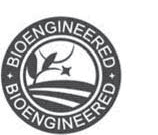On December 21, 2018 USDA published their final rule on bioengineered food disclosure labeling, commonly known as “GMO labeling”. The rule adheres to the stipulations in the enabling legislation and is based on the current science but may not satisfy consumers.
The scope of the labeling requirement is limited by statute and applies only to human food that is subject to FDA labeling requirements and certain USDA Food Safety and Inspection Service (FSIS) regulations. The new regulations to be published as 7 CFR Part 66 define a bioengineered food as, “A food that contains genetic material that has been modified through in vitro recombinant deoxyribonucleic acid (rDNA) techniques and for which the modification could not otherwise be obtained through conventional breeding or found in nature….” This is a significant departure from the now preempted 2016 Vermont Law that required labeling of any food “produced with genetic engineering” or that may have been produced with genetic engineering.
Foods exempted from the disclosure requirement include:
- Refined foods that do not contain detectable levels of modified genetic material. Most corn starch or soybean oil would not contain detectable levels of modified genetic material even if derived from bioengineered crops.
- Pet foods are not covered by the regulations.
- Incidental additives as defined in 21 CFR 101.100(a)(3).
- Food served in a restaurant or similar retail food establishment.
- Food produced by “very small food manufacturers” with less than $2.5 million dollars in annual sales.
- Foods with inadvertent or unavoidable bioengineered materials at levels of up to five percent (5%) for each ingredient.
- A food derived from an animal that consumed feed produced from, containing, or consisting of a bioengineered substance.
- Food certified under the National Organic Program.
- Foods subject to USDA FSIS labeling rules unless the predominant ingredient (excluding water, stock, or broth) would be labeled as bioengineered if sold on its own. For example, beef stew containing genetically modified corn but with beef as the predominant ingredient, would not be labeled as bioengineered.
Disclosure methods
The law provides a great deal of flexibility in how bioengineered foods may be labeled. The disclosures must appear on either the front panel; near the distributor name and address on the information panel, or on an alternate panel likely to be seen by the consumer “under ordinary shopping conditions.” There are also several disclosure methods:
- Text,
- ‘‘Bioengineered food’’ a raw agricultural commodity or processed food that contains only bioengineered food ingredients; or
- ‘‘Contains a bioengineered food ingredient’’ for multi-ingredient food that contains one or more bioengineered food ingredients.
- Symbol:
 There is also a colored version.
There is also a colored version. - Electronic or digital link accompanied by the statement “Scan here for more food information’’ and a phone number where the consumer can obtain the information.
- Text message: The label must include this statement ‘‘Text [command word] to [number] for bioengineered food information.’’
Voluntary labeling is permitted for foods that do not contain detectable levels of bioengineered genetic material but that contain ingredients derived from bioengineered crops.
USDA will maintain a list of bioengineered foods to help food manufacturers with efforts to determine whether their products may be subject to bioengineered food disclosure. As stated in the Federal Register Notice, “The following foods comprise the List of Bioengineered Foods: alfalfa, apple (Arctic™ varieties), canola, corn, cotton, eggplant (BARI Bt Begun varieties), papaya (ringspot virus-resistant varieties), pineapple (pink flesh), potato, salmon (AquAdvantage™), soybean, squash (summer), and sugarbeet. Note that not all varieties of these crops are genetically modified but manufacturers must be certain of the bioengineered status of any ingredients they use from this list.
Important Dates:
The rule becomes effective February 19, 2019.
The Implementation Dates are:
January 1, 2020 for all but small manufacturers and
January 1, 2021 for small food manufacturers with annual receipts of at least $2,500,000 but less than $10,000,000.
The Federal Register notice states that “Regulated entities should begin implementing the NBFDS no later than those dates by identifying the foods that will need to bear a BE disclosure, the records necessary to meet the record keeping requirements, and the type of BE disclosure they will use….”
Voluntary Compliance Date: Ends on December 31, 2021. Up until this date companies may voluntarily disclosure bioengineered foods by methods required by State regulations or using auxiliary marking (ink stamping, stickers, etc.).
All foods subject to this rule must be properly labeled by the Mandatory Compliance Date: January 1, 2022.
It will be interesting to see the response of consumers and food manufacturers to these requirements. We’ll keep you updated and will start discussing compliance with our clients.



